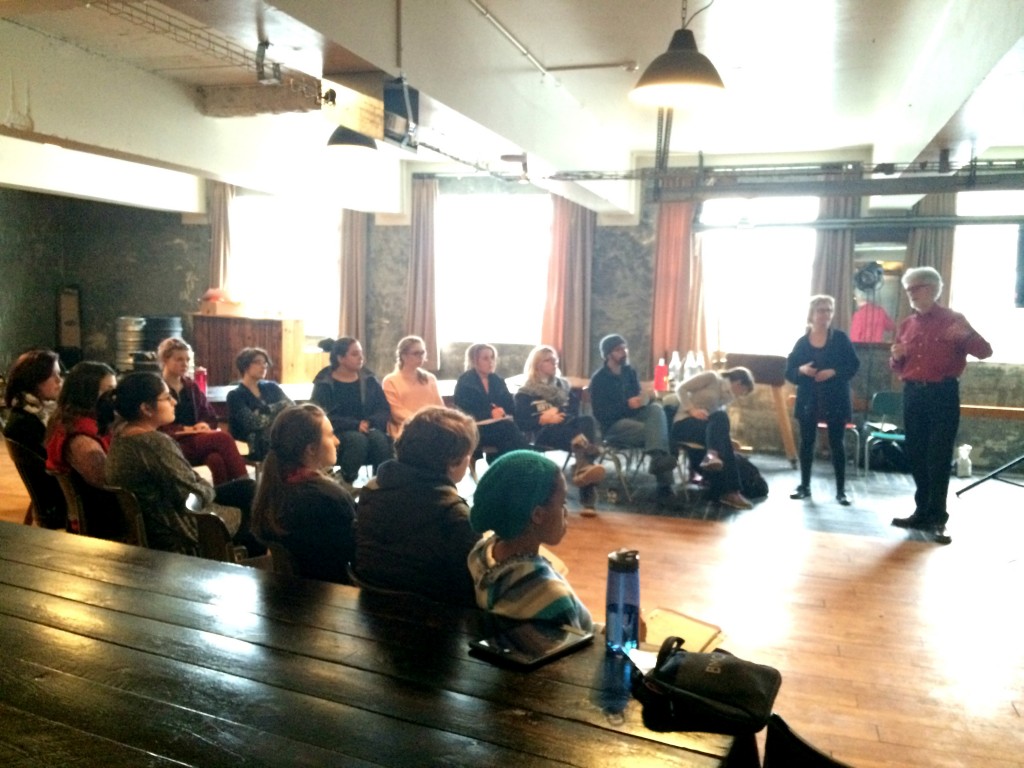(This post is by Roz Sullivan-Lovett, HC class of 2019.)
Our first day in Iceland started early and moved fast, beginning with our arrival at the Kex Hostel just after 8:00am and continuing with meeting Chris Foster and Bára Grímsdottír, one of Iceland’s best-known folk singers.

Bára taught us a number of songs and educated us on the syllabic structure of rímur, the strategies around matching tunes to words (basically, rímur singers match a story to a traditional tune that they feel fits the story–but each story and each tune can be mixed and matched in any way, as long as their structures function together correctly), and the stories that they tell. Chris Foster played us a number of pre- and just barely post-war recordings of traditional rímur singing, some of which I’ve attempted to find, but all I’ve turned up is this 1940 recording sung by one Sigurd Bardarson.
As when [Philadelphia-based Icelandic composer] Stephán visited us at Bryn Mawr, I was struck by the stylistic structure of the music: Icelandic folk songs often do not resolve at the end of their phrases like much of Western music, and, as we learned, many songs rely on half-steps and small intervals to keep the singer’s voice going for the entire rímur, which may well be hours long. As we moved onto tvisong (which use harmonies built on fifths), I think all of us felt the strength of the music and the history behind it. It’s quite unlike anything else I’ve ever heard.
Bára and Chris have a website!
